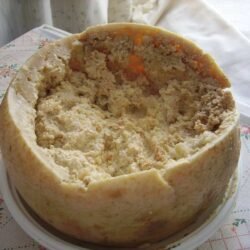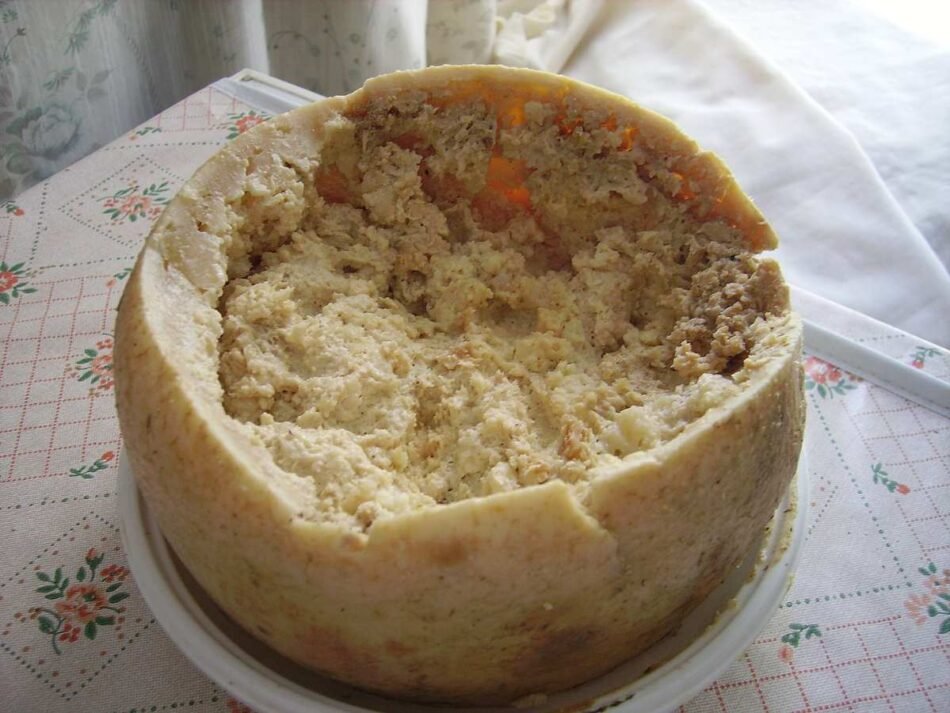
Casu Marzu: The Dangerous Italian Maggot Cheese
Casu Marzu begins with the production of Pecorino cheese, but the fermentation process is taken beyond the usual limits until the cheese undergoes complete decomposition. At this stage, larvae from the Piophilidae family, also known as cheese flies, are introduced, rendering the cheese potentially hazardous to eat.
Ingredients
- Pecorino Sardo cheese
- Maggots
Instructions
- To start, take some pieces of Pecorino Sardo cheese. Set them aside in the open. Keep them uncovered to allow Piophilacasei (commonly known as “cheese flies”) to lay eggs in the cheese.
- The eggs then hatch into white, transparent white maggots in about 1-2 days. The maggots are about 1/3 inch (8 mm) long.
- In case you don’t want to wait for the cheese flies to lay eggs naturally, the option of deliberately introducing maggots to the cheese is always open. This ensures the speeding up of the process.
- One piece of the cheese would most probably contain thousands of maggots. They help decompose the fats present in the cheese and cause it to ferment by feeding on it.
- With this you will find your cheese becoming very soft in texture and liquid (also called “lagrima” meaning “tears”)will start to drain out of it.
- It will take almost 3 months for the finished cheese to be ready and once done, you can serve it with the Sardinian bread (also called “pane carasau”) and red wine.
Nutrition
Calories: 223kcalCarbohydrates: 2gProtein: 15gFat: 17gSaturated Fat: 10gCholesterol: 57mgSodium: 589mg
Tried this recipe?Let us know how it was!

